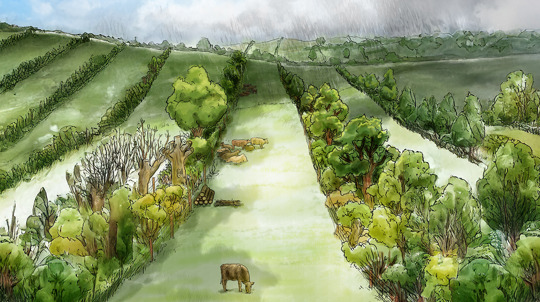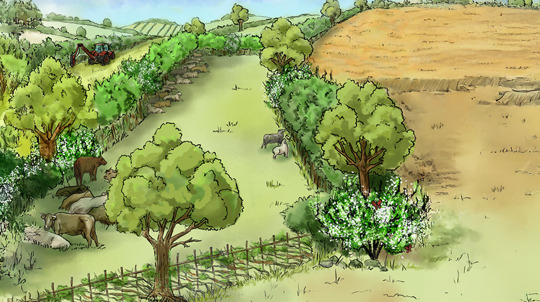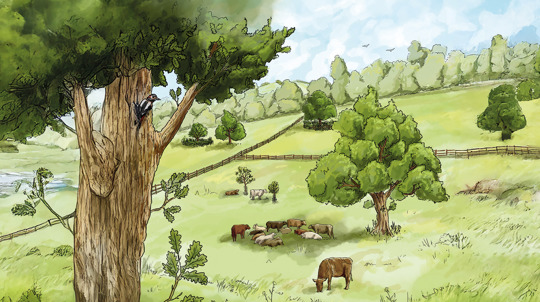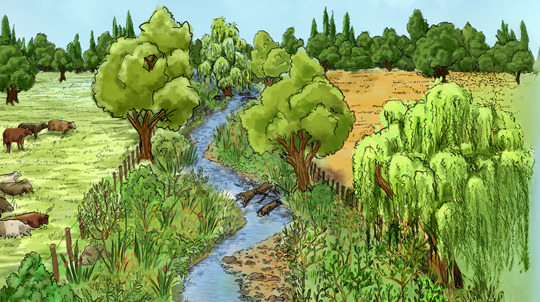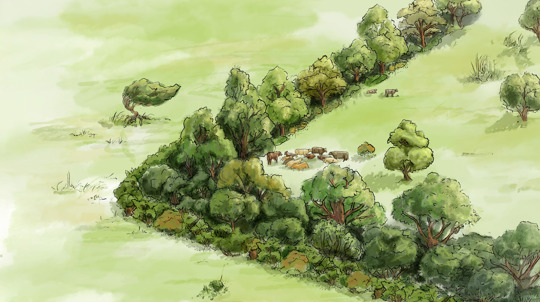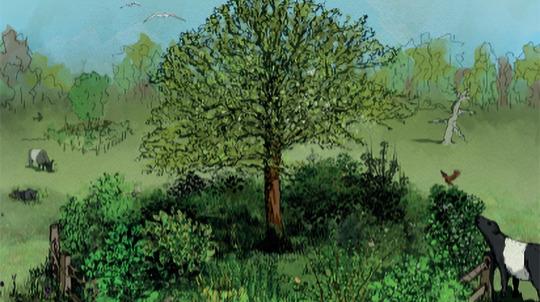How to plan a silvoarable system
When creating silvoarable systems like tree alleys, it’s important to take the orientation of the rows, their spacing and their overall design into account.
Orientation
Tree rows are often oriented north to south to reduce shading on the crops growing in the alleys in between. That said, you can change the orientation to reflect the slope, prevailing winds or specific site objectives, for example: planting along contours to reduce soil erosion.
Row spacing
Rows should be spaced wide enough for farm machinery to operate, with alleys spanning around 24m wide. Usually, the width of the alley will be related to existing tramline spacings. Headlands also need to be considered at either end of the row.
In-row design
As well as accommodating arable operations, tree rows need to be wide enough to allow access for maintenance to the trees themselves. Trees should be spaced along the row according to their species preference, and though we’d recommend making each row four metres wide, double or triple rows of trees can be incorporated where appropriate. Rows can also be undersown with a wildflower mix to provide additional benefits, including food for beneficial insects.
As well as design, there are lots of other considerations that will determine how successful your silvoarable systems will be once they’re planted.
Tree protection
Tree guards will protect your young trees from browsing mammals like deer, rabbits and voles. Fruit and nut trees may need to be staked depending on their location and the rootstock used.
What to grow
If productive trees are planted, a route to market for your new product should be identified before any planting takes place.
For more information on appropriate species for your site location and growing conditions, please see our tree species handbook.
Varieties
The best fruit varieties for your farm will depend on soils, aspect, exposure, altitude and location. Pollinator groups also need to be considered to ensure there’s a mutual pollination benefit between varieties, which will maximise productivity. Select varieties that can be harvested at a time that complements adjacent arable operations.
Rootstocks
Productive fruit and nut trees are grown on different rootstocks to ensure consistent size, form and productivity. Silvoarable design will involve decisions about which rootstock is appropriate. Most schemes planting fruit trees will use medium or semi-vigorous rootstocks (for example, MM106 for apples).





